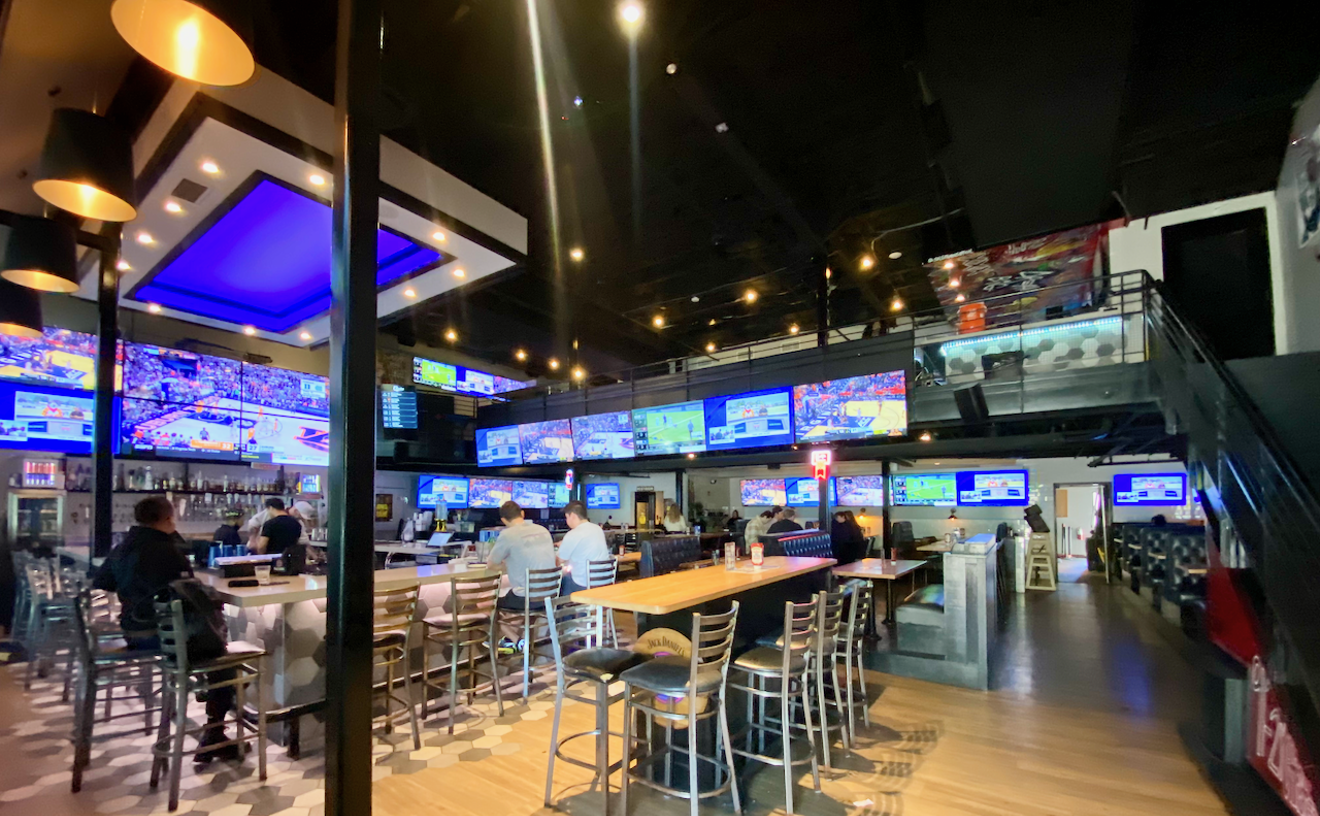Karaoke, too.
The food wasn't always spectacular; though the sushi was good, it was never mind-bending. Still, Royal somehow became a refreshing breeze, a joyful place to gnaw on scraps of dead fish fearlessly displayed in the raw.
Royal Tokyo was one of the first Japanese restaurants in Dallas when it opened in 1972. In 1980, it installed Dallas' first sushi bar at a time when just the thought of a strip of raw fish resting on a rice pontoon was enough to spark a chorus of gag reflexes. Today, versions of the cuisine can be quarried from Sponge Bob lunch boxes.
Royal brought green tea ice cream to Dallas and invented the spicy Cajun crawfish sushi roll, beating New Orleans to the punch that was its birthright. It also served as sushi-chef boot camp, deploying hands such as Teiichi Sakurai, founder of Teppo and Tei Tei Robata Bar. Dallas is a better city because of Sakurai, a better city because of Royal Tokyo.
But that timeline was derailed in October 2001. A fire struck, obliterating the rear of the restaurant while the load of Japanese charm out front was untouched. Owner Shohei Takamatsu cites a gas dryer in the restaurant's laundry room as the culprit. Now a large yellow "for lease" sign dominates where gurgling ponds of koi once ruled.
It's hard to tease out the specifics of why Takamatsu chose not to revive the Dallas landmark, though generally it revolves around an insurance dispute. "The insurance people were very nasty," he says. "We tried to negotiate, and they don't want to pay any money."
Or maybe it was that the insurance company didn't want to pay what it would cost to resuscitate Royal. Takamatsu says the sum was close to $1 million. This isn't necessarily the cost of the damage, but appears to be the amount of loot needed to bring the aging restaurant up to current building codes once contractors started swinging sledgehammers. Takamatsu insists he doesn't have that kind of money, and his insurance company wasn't itching to shell it out. So they negotiated themselves into an impasse.
Now more than a year later, Royal Tokyo is on the block (Takamatsu owns the real estate). And Takamatsu has distilled his restaurant into Royal Tokyo Sushi Den, taking over Yumeya Sushi Bistro near Trinity Mills and the Tollway. He seemingly made the transition without so much as a splash of paint, a profound detour from the days of master carpenters. The sushi bar is the same. The Pergo floor is the same. Heck, the weird ceiling mural, a kind of whimsical New Age vision of moon, clouds and stars, still sloshes across the ceiling.
The food isn't the same. It's better. This is in spite of--or because--the hibachi tables having been supplanted by a robata grill.
There are some flaws, minor ones. Yet they aren't lovable. Tofu cubes in the miso soup are pure mush, like egg noodles tortured in a turkey fryer. Deep-fried New England soft-shell crab leans more toward pasty than crisp, though not to an alarming extent. Tako (octopus) sushi is rubbery and harbors flavors veering a bit off the flavor profile.
But that's it. Bright orange masago (smelt roe) is light, fluffy and separate, with a gentle crunch. Salmon skin roll was savory, crispy and slightly chewy, as it should be.
It's the simple things that rattle the senses, though. A hamachi (yellow tail) and sake (salmon) sashimi combo was meticulously displayed on a bed of rice, gentle strips and folds of fish arranged seemingly with an eye toward color (blend here, contrast there). Hamachi was cool and nutty, with a clean richness we haven't come across in far too long. The bright orange salmon was just as clean and supple without the stickiness that can draw winces.
But where you might wish this sushi den would blow your doors off, it merely cracks them open. Uni (sea urchin) is a tacky blob of randy exotica, a two-for-one serving of sex organs. Since the sea urchin is a hermaphrodite, you get gonads and ovaries, the roe and the milt, on a single rice bundle. When it's fresh, the flavors can be elevating, leaving a clean, rich nuttiness with a slight metallic edge on the finish. But this uni was merely adequate, with a whisper of burnt plastic in the aftertaste.
Other surprises lurk unexpectedly. Chilled horensoo oshitashi is simple joy, a breeze from the Royal ancestor. A square dish is layered with steamed spinach leaves in the center, and soy is channeled between the stack and the edge of the dish like a moat. The leaves are dusted with shredded bonito, thin blond curls of dried skipjack tuna. The bitter, leafy earthiness--silky in texture--is deftly foiled by the concentrated sea wash, delivered in whispered bursts shrouded in a delicate crunch.
From the robata grill comes another piece of alluring simplicity. Stalks of asparagus are wrapped in jerky-dry grilled bacon, fastened with a pair of thin wooden skewers. The robata concentrates flavors, binding them tight in a scorched smokiness.
Among Royal's other innovative Dallas introductions is Kobe beef, which it began serving some 10 years ago. Takamatsu says he has been friends with legendary bass fisherman and rancher Gary Yamamoto for a long time, and he took it upon himself to promote the beef from the Wagyu cattle Yamamoto raises in East Texas. Now Kobe has become a steak house staple.
We sampled it in the Kobe Wagyu shabu shabu, a lyrical menu entry if there ever was one. Shabu shabu means "swish swish," and it refers to the back-and-forth sweeping motion used when cooking very thin strips of beef (or other meat) in hot water. Yet it is not simply water. It is a thin broth, imbued with a hint of marine richness by simmering strips of kombu, a kind of kelp, and removing them just before the water erupts into a boil.
The broth is delivered in a pan that looks like a bundt cake contraption. It's accompanied by a dish with well-marbled beef strips, glass noodles, cooked soba noodles, cabbage and snow peas, among other forms of vegetation. The food is pinched with chopsticks and swished through the scalding broth. The best part was the marbled beef, almost pink from the creamy veins rippling through it, which permit it to melt across the tongue like ice cream on baked pavement.
Yet this den isn't an icon. While the food is tighter, the experience doesn't have the same nurturing buzz as the original. It's cold, remote and cramped instead of open and alluring. Takamatsu isn't enamored with it either. "It's too small for me," he insists. He says he yearns for the hibachi energy Royal once had. He's mulling a refabricating of Royal Tokyo in its original splendor, though not in Dallas. Miffed by the smoking ban, he has his eyes locked on Addison or Frisco. This head may yet grow back into its crown, though the Dallas throne may be gone forever.
17721 Dallas Parkway, 214-368-3304. Open for lunch 11:30 a.m.-2 p.m. Monday-Saturday. Open for dinner 5:30 p.m-10 p.m. Sunday-Thursday, 5:30 p.m.-11 p.m. Friday & Saturday. $$-$$$










